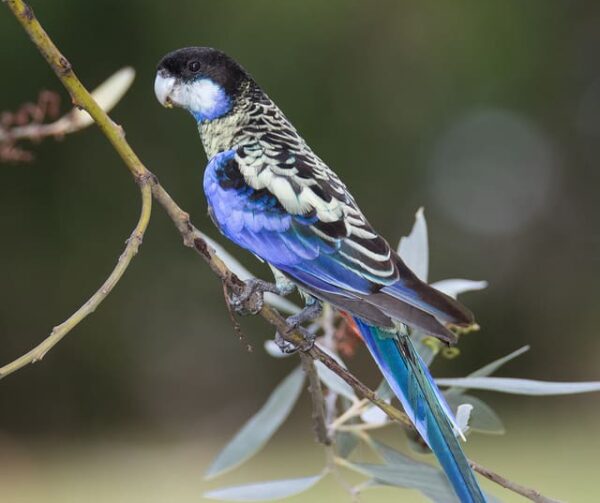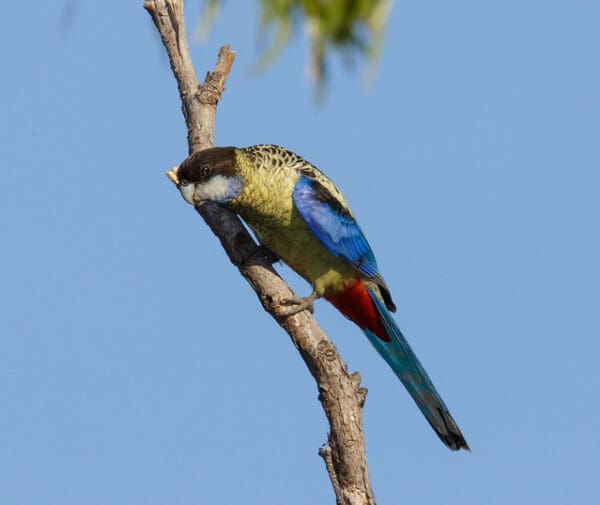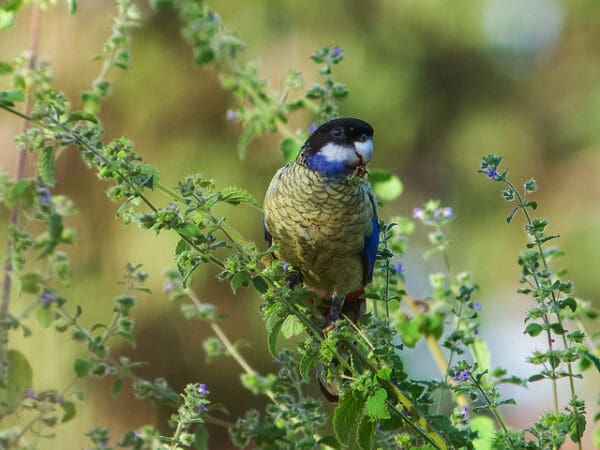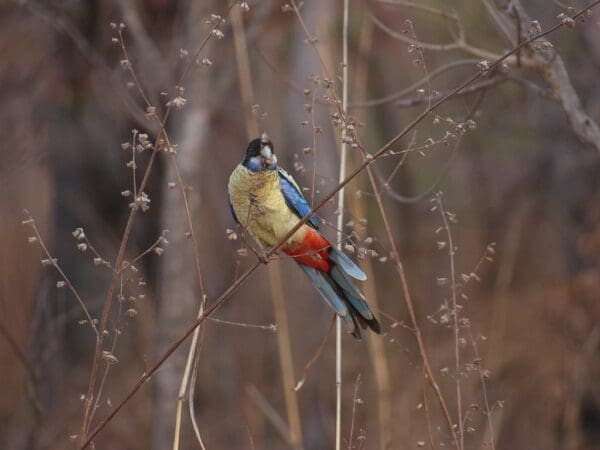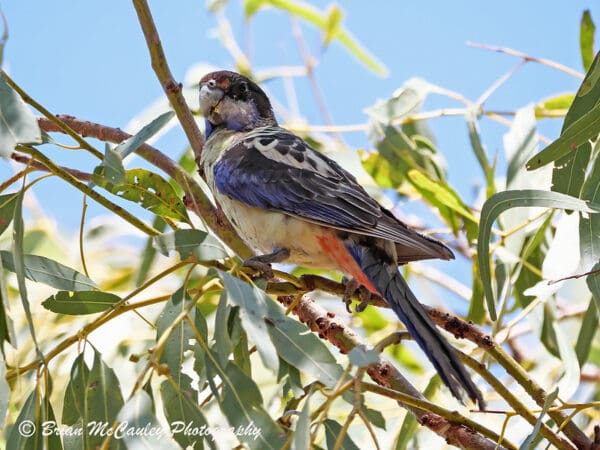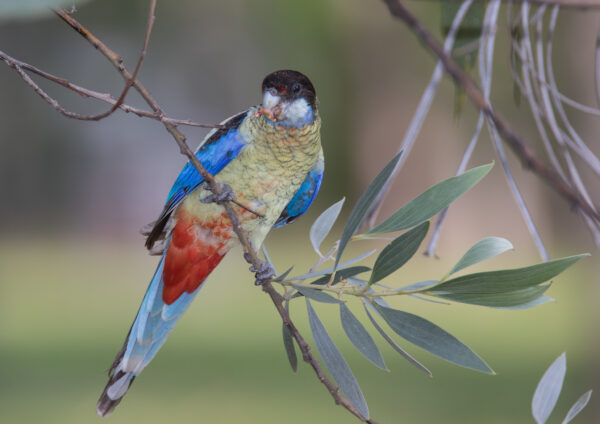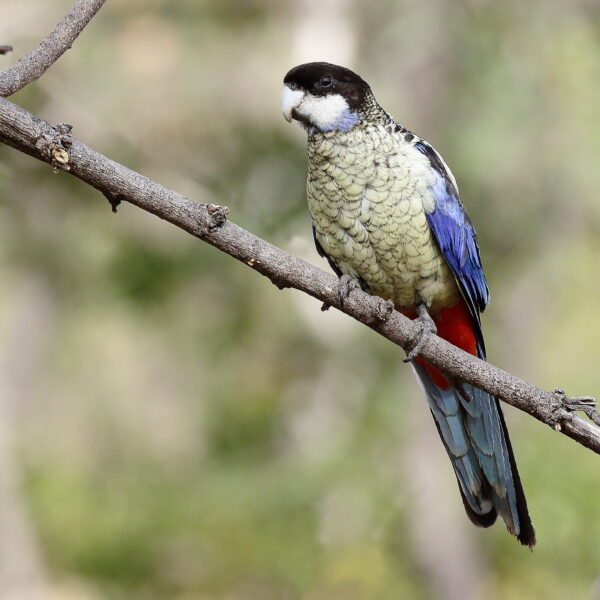Northern Rosella
Also known as:
Brown's Rosella or Parakeet, Smutty Rosella or Parakeet
Also known as:
Brown's Rosella or Parakeet, Smutty Rosella or Parakeet
![© Geoff Whalan [CC BY-NC-ND 2.0] via Flickr A wild Northern Rosella perches on a branch](https://parrots.org/wp-content/uploads/2023/01/wpt_Northern-Rosella_1191-7-e1732294938816-100x100.jpg)
![© Geoff Whalan [CC BY-NC-ND 2.0] via Flickr A wild Northern Rosella perches on a branch](https://parrots.org/wp-content/uploads/2023/01/wpt_Northern-Rosella_1191-8-100x100.jpg)
![© Nick Athanas [CC BY-NC-SA 2.0] via Flickr A wild Northern Rosella perches on a branch](https://parrots.org/wp-content/uploads/2023/01/wpt_Northern-Rosella_1191-5-100x100.jpg)
![© Daviddic [CC BY-SA 4.0] from Wikimedia Commons A wild Northern Rosella feeds on seeds](https://parrots.org/wp-content/uploads/2023/01/wpt_Northern-Rosella_1191-4-100x100.jpg)
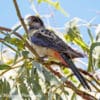
![© Geoff Whalan [CC BY-NC-ND 2.0] via Flickr](https://parrots.org/wp-content/uploads/1990/08/Northern-Rosella-Geoff-Whalan-100x100.jpg)
![© Summerdrought [CC BY-SA 4.0] Wikimedia Commons A wild Northern Rosella perches on a branch](https://parrots.org/wp-content/uploads/1990/08/Northern-Rosella-Graham-Winterflood-100x100.jpg)
DID YOU KNOW?
The origin of the word “rosella” supposedly came from a misspelling of “Rosetta Parrots”, a name possibly given to the birds after the Christian name of the wife of George Fife Angas, a pioneer of Southern Australia.

Platycercus

venustus
Size:
28 cm (11 in)
Weight:
85-100 g (3-3.5 oz)
Subspecies including nominate:
two: P.v. venustus, P.v. hilli
Colour Adult:
P.v. venustus: Both adults body pale yellow with dusty black scalloping; cheek spots white, bordered with blue on bottom edge; head black; undertail coverts red; back mottled with pale yellow on solid black. Beak white. Eye brown.
P.v. hilli: Both adults as in venustus but with underparts scalloped dusty black; lower cheeks violet/blue.
Colour Juvenile:
As in adults but duller in colour with a grey/black head, undertail coverts orange/red mixed with pale yellow; shorter tail and stripe on underwing.
Call:
Contact call in flight sharp and short note chit-chut…chit-chut. While perched gives a three note whistle on ascending scale or metallic piping sounds. Alarm call shrill screech. Soft chattering while feeding.
More Information:
Content Sources:
CITES
BirdLife International
Cornell Lab of Ornithology/Birds of the World
Parrots: A Guide to Parrots of the World, Juniper and Parr, 1998
Parrots of the World, Forshaw and Cooper, 1977. 2010 edition
Parrots of the World, Forshaw, 2006.
Parrots in Aviculture, Low, 1992.
Captive Status:
Not common, even in Australian aviculture.
Longevity:
Probably between 4-12 yrs.
Housing:
Walk-in aviary, minimum length 4.5 m (14.7 ft).
Diet:
Small seed mix such as: canary, oats, safflower; spray millet; limited sunflower seed, dry, soaked or sprouted; sprouted pulses such as mung beans, cooked butterbeans and lentils; boiled maize; green leaves (daily) such as: Swiss chard, lettuce, sowthistle, dandelion, chickweed; vegetables such as: carrot, celery, zucchini, corn, green beans and peas in the pod; fruit such as: apple, pear, orange, banana, pomegranate; nuts such as: hazelnuts, pecans and roasted peanuts; complete kibble.
Enrichment:
Bathing, chew items (bird safe wood, vegetable tanned leather), swings, knotted ropes, ladders, noise makers (bells, etc).
Nest Box Size:
8″ x 8″ x 24″ (20.3 cm x 20.3 cm x 61 cm) vertical box.
Clutch Size:
2-4
Fledging Age:
5 weeks
Hatch Weight:
—
Peak Weight:
—
Weaning Weight:
—
World Population:
Unknown, described as locally common. Stable.
IUCN Red List Status:
Least Concern
CITES Listing:
Appendix II
Threat Summary:
Not globally threatened. Considered to be relatively uncommon overall. Possibly this species has historically been limited by habitat, especially the availability of dry-season refuges; otherwise no discernable reason for scarcity.
Range:
P.v. venustus: NW Queensland west through coastal Northern Territory to Victoria River.
P.v. hilli: Kimberley division of W Australia east to Victoria River, NW Northern Territory.
Habitat:
Found up to 500-600 m (1640-1968 ft), in a range of areas including savanna and monsoon woodland with Callitris sp., paperbark Melaleuca habitats, riverine woodland, scrub, clearings, roadsides, cultivated areas, urban areas, by creeks in hill country and mangroves.
Wild Diet:
Feeds on fruits, buds, blossoms, nectar and the seeds of Acacia, Eucalyptus, Callitris intratropica and Melaleuca, grasses and paperbark.
Ecology and Behaviour:
Stays in one area. Is shy and usually found in small, unseen groups, but is noisier at the start of breeding season. Tends to stay in the trees more than other rosellas.
Clutch and Egg Size:
2-4 rounded eggs, 25.5 x 20.5 mm (1 x 0.8 in).
Breeding Season:
June-September. Nest is in hollow limb or tree cavity.
Related Links:
—
